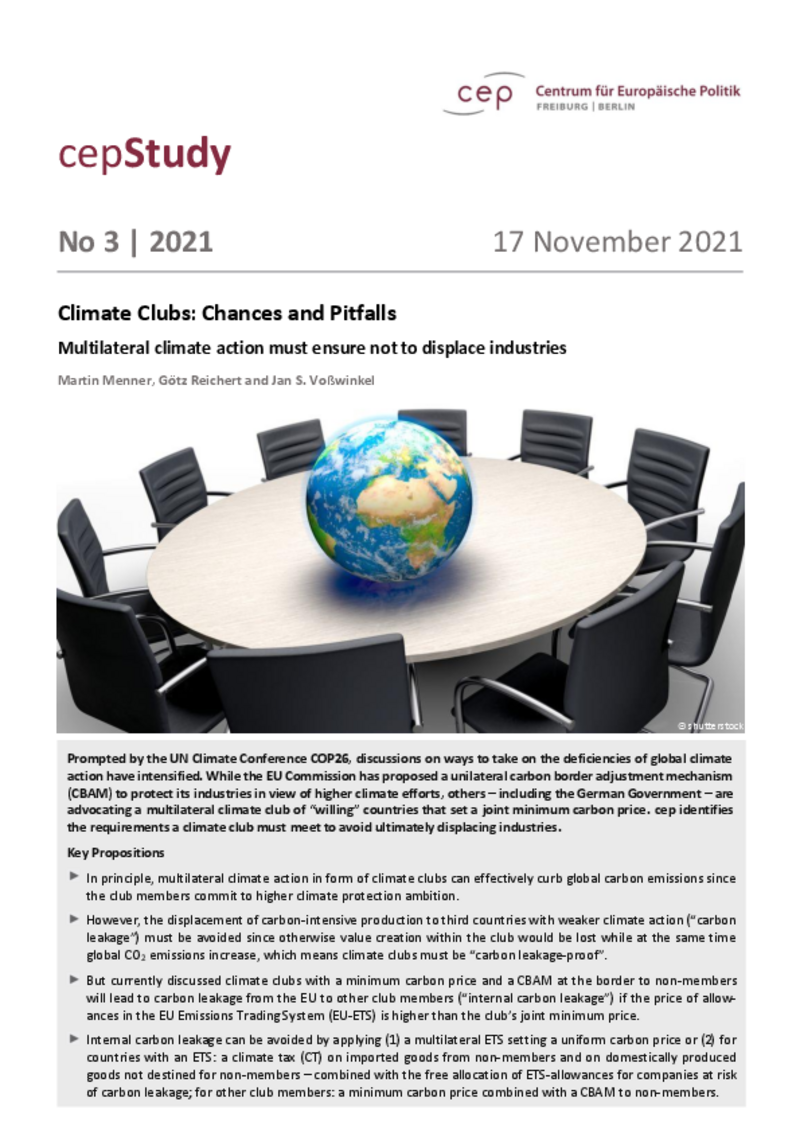
Climate
Climate Clubs: Chances and Pitfalls (cepStudy)
cepStudy
"In principle, climate clubs can curb global CO2 emissions more effectively," says Martin Menner of the Freiburg-based think tank Centrum für Europäische Politik (cep). The economist has written an analysis of the opportunities and pitfalls of climate clubs.
Menner formulates conditions that a climate club must fulfil in order not to harm the industry. "Even with all the opportunities of climate clubs for more effective CO2 reduction, it must be ensured that climate clubs avoid so-called carbon leakage, i.e. the shifting of CO2 emissions to countries with more lax environmental standards," emphasises the cep expert.
According to Menner, the climate clubs currently under discussion do not fulfil this condition. Rather, they would lead to the relocation of CO2-intensive production from the EU to other club members, as the allowance price in the EU Emissions Trading Scheme (EU ETS) is expected to be higher than the minimum price in the club.
In the long term, Menner believes that a network of emissions trading systems (ETS) would be ideal. However, because time is pressing, he proposes as a short-term solution a "carbon leakage-proof" climate club: Club members with emissions trading systems would protect their companies at risk of carbon leakage by allocating ETS allowances free of charge. To allow goods to be traded within the club at the agreed minimum price, they are to introduce a climate tax at the same level. "This climate tax is to be levied on imports from non-member countries as well as on domestic production. Only exports to non-member countries are exempt," Menner emphasizes. Other club members could also use other instruments to guarantee the minimum price. Moreover, they could use a carbon border adjustment to prevent relocation to non-member countries. "This would create a level playing field inside and outside the climate club."
Download PDF
| Climate Clubs: Chances and Pitfalls (cepStudy) (publ. 11.17.2021) | 628 KB | Download | |
 | |||




